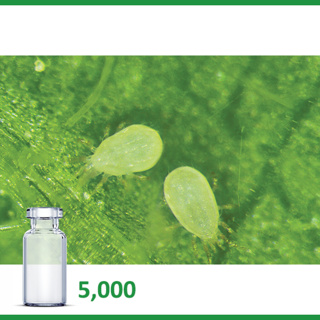Occidentalis - Bucket 5,000
Item No. BIOTYPOCC5
Occidentalis is a predatory mite which attacks predominantly the two-spotted mite (Tetranychus urticae) but will also feed on European red mite and apple rust mite. Mostly used in tree crops. They are tolerant of organophosphate insecticides & hot conditions.
Description
Occidentalis is a predatory mite which attacks predominantly the two-spotted mite (Tetranychus urticae) but will also feed on European red mite and apple rust mite. Mostly used in tree crops. They are tolerant of organophosphate insecticides & hot conditions.
Specifications
- Product Size Selection
- 5000 / bucket
- Sales UOM Pack Qty
- 1
- Pack Size
- 5000 / bucket
- Brand Name
- Biological Services
- Country of Manufacture
- Australia
- Product Range
- Biological Controls
- Category
- Mites
- Sub Category
- Two Spotted Mites
Occidentalis - Bucket 5,000
Specifications
- Product Size Selection
- 5000 / bucket
- Sales UOM Pack Qty
- 1
- Pack Size
- 5000 / bucket
- Brand Name
- Biological Services
- Country of Manufacture
- Australia
- Product Range
- Biological Controls
- Category
- Mites
- Sub Category
- Two Spotted Mites
Description
Occidentalis is a predatory mite which attacks predominantly the two-spotted mite (Tetranychus urticae) but will also feed on European red mite and apple rust mite. Mostly used in tree crops. They are tolerant of organophosphate insecticides & hot conditions.
